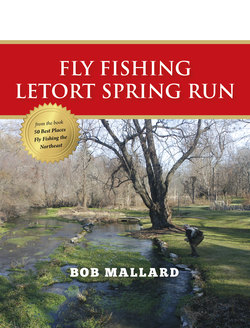Читать книгу Fly Fishing Letort Spring Run - Bob Mallard - Страница 3
На сайте Литреса книга снята с продажи.
Оглавление45 . Letort Spring Run
Location: South-central Pennsylvania, about a 1-hour ride from Harrisburg; a 2½-hour ride from Philadelphia; a 3-hour ride from Pittsburgh; and a 1½-hour ride from Washington, D.C. Full-service airports are available in all four cities.
Letort Spring Run is to fly fishing what Gettysburg is to the Civil War, Little Bighorn is to the Plains Indian Wars, and Bunker Hill is to the Revolutionary War—sacred ground. It is to Pennsylvania what the Batten Kill is to
Vermont, the Neversink River is to New York, the Rapid River is to Maine, and the Madison River is to Montana. Being at the Letort just feels different—like something very important happened there. You can sense the presence of those who came before you more than anywhere else I have ever fished.
Fly-fishing legends such as Vince Marinaro, Charlie Fox, Ed Koch, Ed Shenk, Alfred Miller (aka Sparse Grey Hackle), and Lefty Kreh all honed their skills on Letort Spring Run. Mere mortals like the rest of us learn just how much our fly-fishing skills need honing on the Letort. To say that the Letort is a difficult stream to fish would be a gross understatement—like referring to Mount Everest as “a tough climb.” I have fished such
notoriously demanding fisheries as the three Paradise Valley, Montana, spring creeks: Railroad Ranch on the Henry’s Fork in Idaho; Silver Creek in Picabo, Idaho; and Flat Creek in Jackson, Wyoming. I consider the Letort harder to fish than all of them.
The Letort was a hotbed for groundbreaking technical advances in fly fishing. At a time when delicate dry flies were king in the Catskills, and classic streamers were the rule in Maine, the Letort faithful developed odd-looking patterns to imitate terrestrials such as hoppers, crickets, beetles, jassids, and cicadas. They experimented with crane flies, midges,
